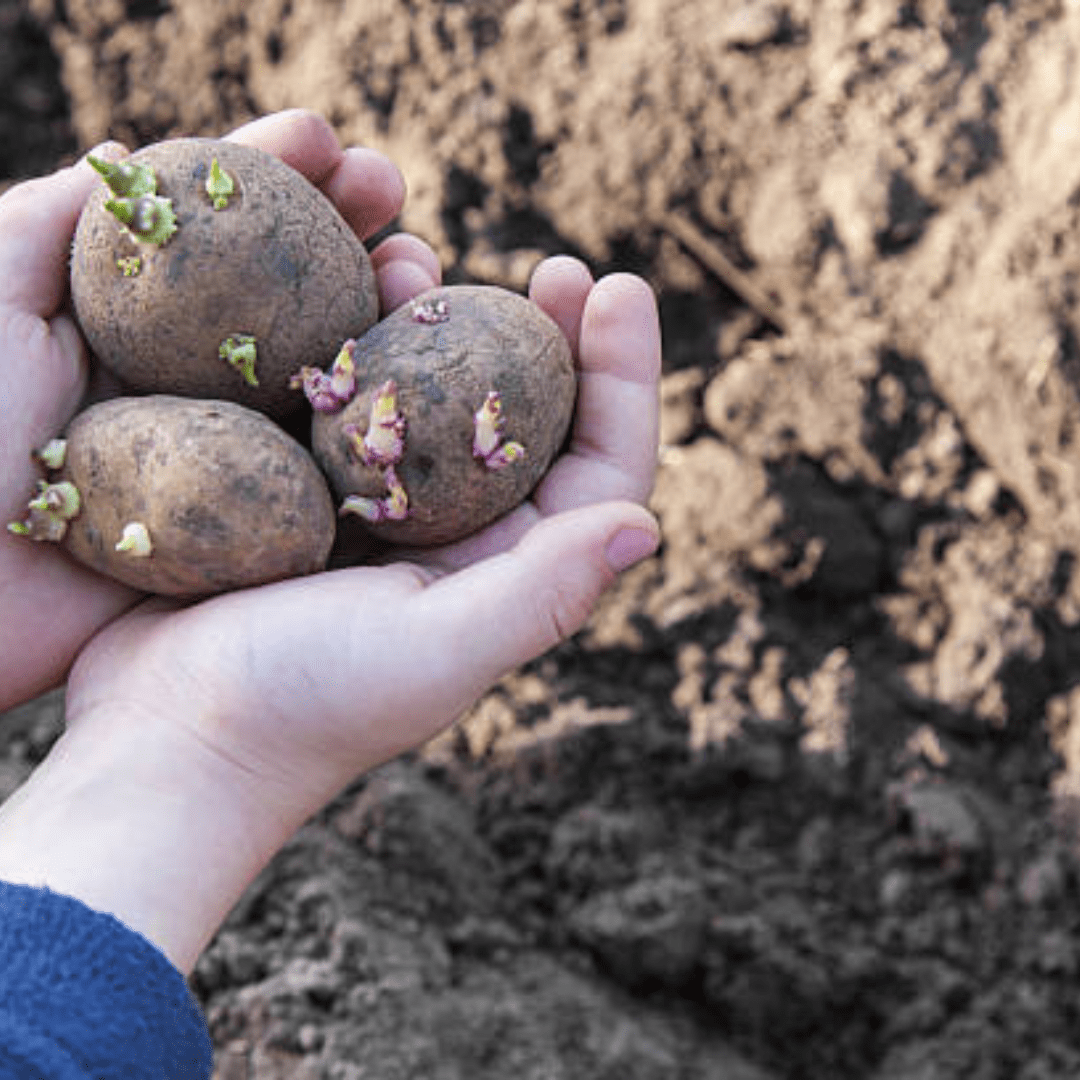Knowing when to plant potatoes is essential for a successful harvest. The ideal time to plant potatoes is in early spring, when the soil temperature reaches around 40°F to 50°F, usually about two to four weeks before your last expected frost date. Planting too early can expose your potatoes to frost, while planting too late can hinder growth.
Choose a sunny location with well-drained soil and ensure proper spacing between seed potatoes for the best results. By understanding when to plant potatoes, you’ll set yourself up for a thriving crop at harvest time!
Planting potatoes at the right time is essential for a bountiful harvest. Understanding the optimal planting seasons, selecting the right potato varieties, and following proper planting and care techniques are crucial steps in ensuring a successful potato crop.
In this comprehensive guide, I will talk about the best practices for planting potatoes to help you achieve a successful harvest. From soil preparation to harvesting and storage, this article will provide you with valuable insights to maximize your potato yield and quality.
This is a pinnable post. Tap or hover over any image in this post to pin to your Pinterest Boards.
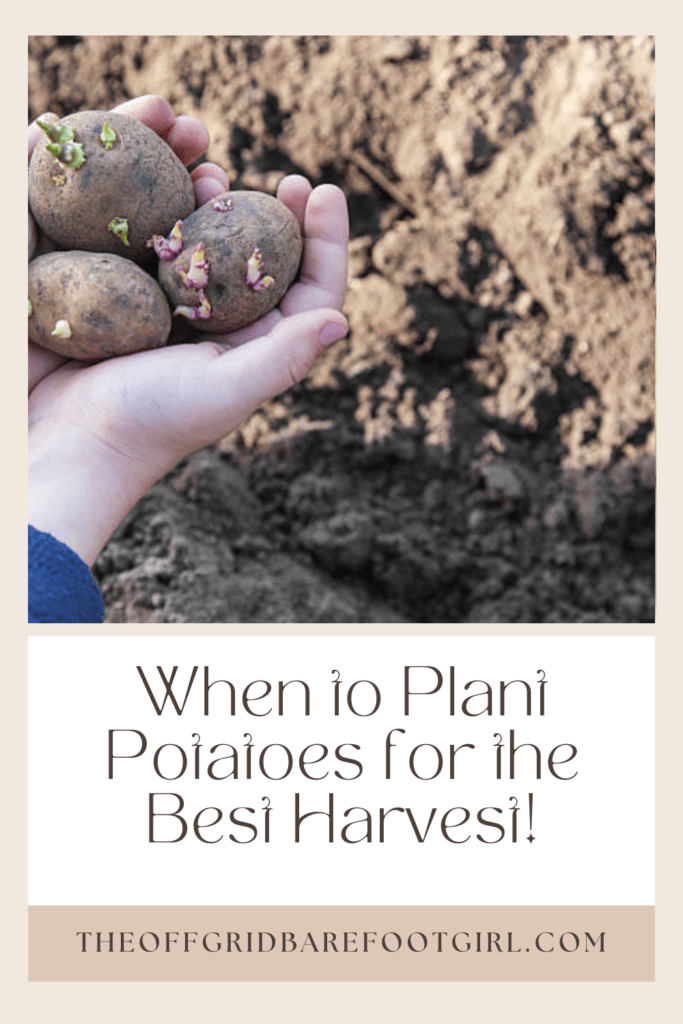
Understanding Potato Planting Seasons
Potatoes have their own fashion sense when it comes to planting seasons. It’s all about timing. You want to plant your spuds when the soil temperature is just right – not too hot, not too cold. Factors like frost dates, soil temperature, and your region’s climate play a role in determining the best time to get those potatoes in the ground.
Key Factors to Consider
When deciding on the perfect potato planting time, consider factors like soil temperature, frost dates, and your local climate. Potatoes are picky– they prefer a cool, moist environment to show off their tuber-tastic potential. Keep an eye on your local weather forecast and soil thermometer to make sure you’re planting at the optimal time.
Timing for Different Regions
Not all potato planting seasons are created equal. Depending on where you hang your gardening hat, the ideal planting time can vary. Coastal regions may have a longer growing season, while mountainous areas might need to wait a bit longer for the ground to warm up. Do some research or chat with your gardening neighbors to find out the best planting window for your specific region.
Selecting the Right Potato Varieties
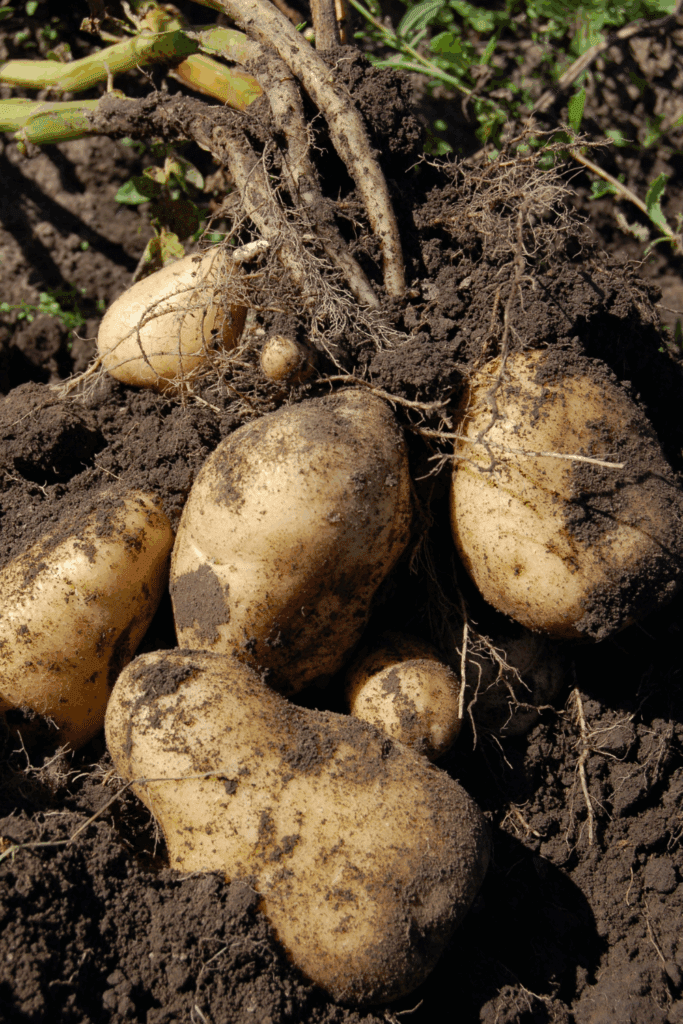
Choosing the perfect potato variety is important – it’s all about what suits your style and growing conditions. From buttery Yukon Golds to flaky Russets, there’s a spud for every taste bud and garden type.
Determining Your Growing Conditions
Before diving into the potato patch, take a moment to assess your growing conditions. Are you dealing with sandy soil or heavy clay? Is your garden a sun-soaked paradise or a shady retreat? Different potato varieties thrive in different conditions, so choose wisely to ensure a bountiful harvest.
Popular Potato Varieties for Different Purposes
Whether you’re craving crispy fries or creamy mashed potatoes, there’s a potato variety out there with your name on it. Russets are perfect for baking, while fingerlings add flair to salads. Research different varieties to find the ones that best suit your culinary desires and garden setup.
Preparing the Soil for Potato Planting
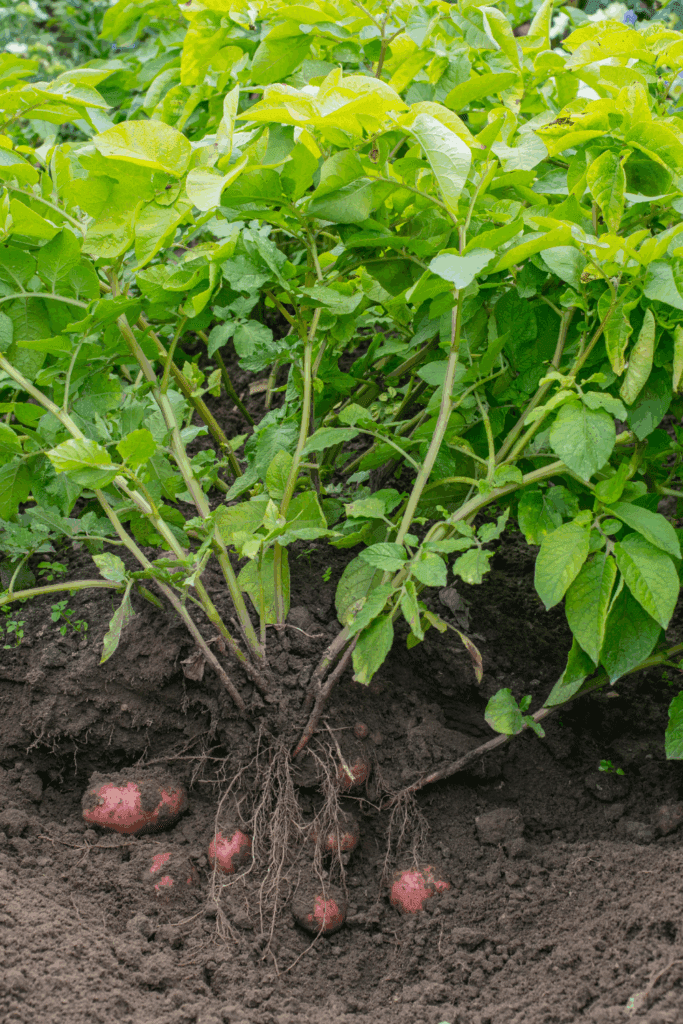
Before you start shoveling those spuds into the ground, it’s essential to lay the groundwork – literally. Soil quality can make or break your potato harvest, so show that dirt some love and get it prepped for planting season.
Soil Quality Assessment
Take a good look at your soil – is it sandy, clayey, or loamy? Perform a soil test to check for pH levels, nutrient content, and drainage. Potatoes like well-draining, slightly acidic soil, so amend as needed to create the perfect growing environment.
To help you test your soil easily at home, I have written a tutorial on how to perform garden soil tests with simple tools and ingredients you may already have on hand. I have provided four different ways to do a soil test and you can check them out at the following link.
4 Easy DIY Garden Soil Tests to Do Now
Soil Preparation Techniques
Once you’ve assessed your soil, it’s time to get down and dirty with some soil preparation. Break out the garden tools and get digging, tilling, and mixing in compost or organic matter to improve soil structure and fertility. Remember, happy soil = happy potatoes.
If you need some further help preparing your soil, I have some handy posts for you to check out.
- How to Fix Sandy Garden Soil with These Effective Organic Amendments
- How to Use the Hand Twist Claw Tiller: Tackling Tough Soil
- How to Install a Worm Tunnel and Improve Your Garden Soil
Optimal Planting Techniques for Potatoes
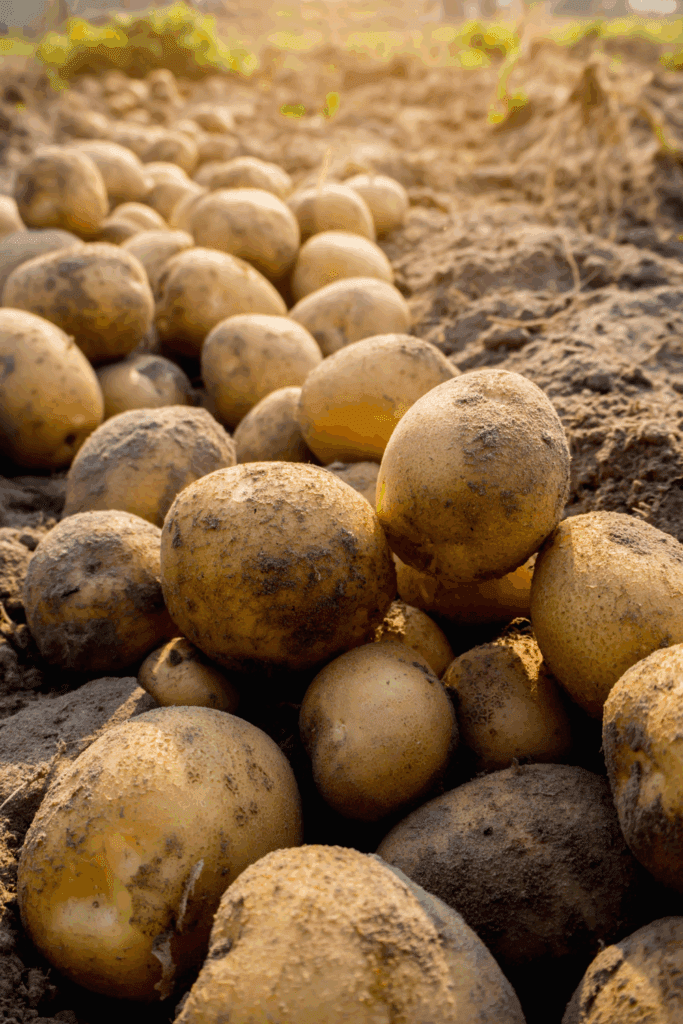
Planting potatoes may seem like a straightforward task, but there are a few tricks of the trade to ensure your spuds reach their full potential. From seed selection to planting depth, mastering these techniques will set you on the path to potato perfection.
Seed Potato Preparation
Before planting, it’s essential to prepare your seed potatoes – the OGs of the spud world. Cut larger seed potatoes into smaller pieces, making sure each piece has at least one eye for sprouting. Let the cut pieces dry for a day or two to prevent rotting before planting.
Planting Depth and Spacing Guidelines
When it’s time to plant, remember the golden rule: more depth, more space, more potatoes. Plant your seed potatoes about 4 inches deep and 12 inches apart in rows, with 30 inches between rows. As the plants grow, gently mound soil around them to encourage tuber development and protect them from sunlight. Now sit back, relax, and wait for those taters to work their magic.
The Number of Potato Seeds I Plant for a Year’s Worth!
I tend to plant one hundred potato seeds in the spring and one hundred more in the fall for a year’s supply of potatoes. I have a backyard potato patch that I rotate through each planting session to prevent the spread of disease in my garden. I cook a lot with potatoes since they are so versatile in the kitchen, and my kids love potato recipes. Potatoes are a great survival food as they can be prepared in many different ways and are easy to grow, and are abundant. They store incredibly well in the right conditions, as well as provide their own seeds at the perfect time for the next planting session!
I plant my spring potatoes in March and harvest around the 4th of July. I wait to plant the fall crop in August for my fall harvest of potatoes in November, in time for Thanksgiving.
You can learn more about my backyard potato patch in the following posts, and how I prepare for a Thanksgiving feast from my garden.
- Why Growing a Potato Patch Is Important for Survival
- Uncover the Secrets to Growing a Thanksgiving Feast Right in Your Backyard!
Caring for Potatoes Throughout the Growing Season
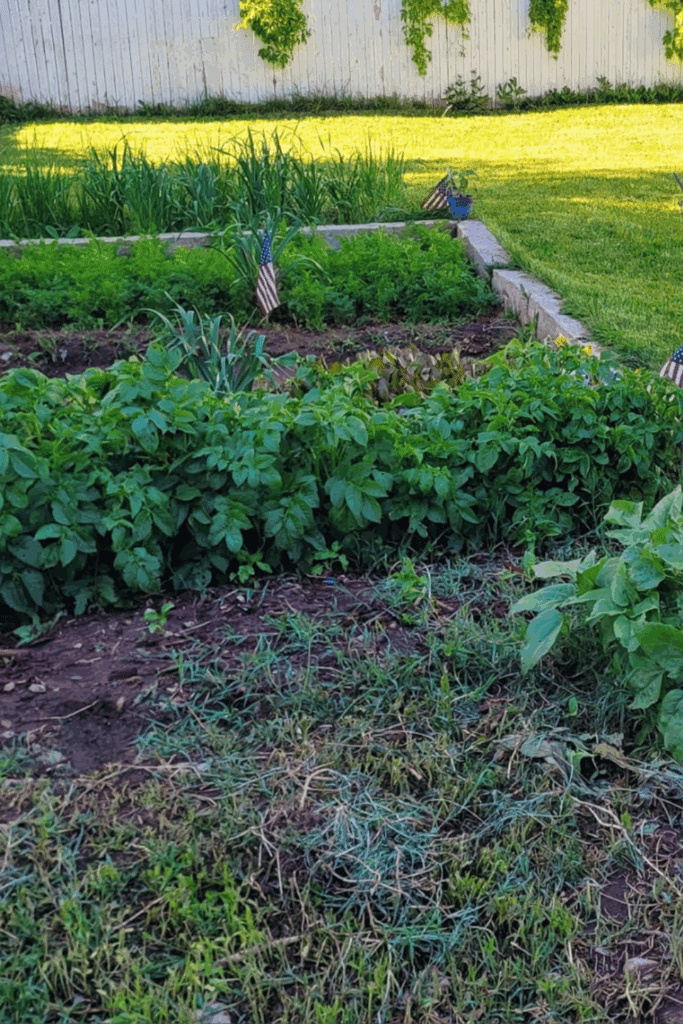
Watering and Fertilizing Strategies
Potatoes are like the divas of the garden – they love attention, especially when it comes to water and nutrients. Keep them happy by giving them about 1-2 inches of water per week, making sure they’re consistently moist, but not waterlogged. Fertilize them every 2-3 weeks with a balanced fertilizer to keep them feeling pampered and productive.
Pest and Disease Management
Just like how you tackle a pile of laundry – don’t let things pile up! Keep an eye out for potato pests like aphids and potato beetles, squashing them before they become a real issue. Diseases like blight can be a buzzkill, so plant disease-resistant varieties and practice good garden hygiene to keep those taters looking their best.
Harvesting Potatoes at the Right Time
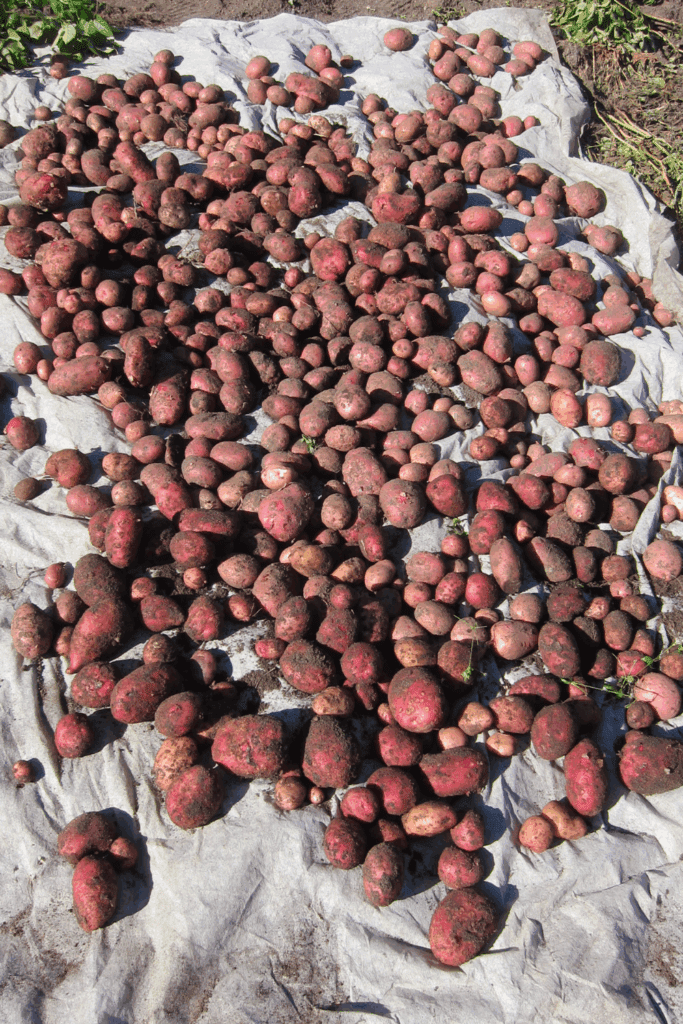
Signs of Ready-to-Harvest Potatoes
When it comes to harvesting potatoes, it’s all about the signals. Wait until the potato plants have died back, then dig a few test hills to see if the potatoes are the size you desire. Digging potatoes is like a treasure hunt, so grab your shovel and start digging for gold… or in this case, spuds!
Harvesting Methods for Different Potato Varieties
Not all potatoes are created equal – some are early birds, while others like to take their time. Early varieties can be harvested as soon as they reach a desirable size, while maincrop varieties need a bit more patience. Gently dig up your potatoes to avoid damaging them, and enjoy the fruits (or tubers) of your labor!
Storing Potatoes for Long-Term Use
Proper Curing and Storage Conditions
After harvesting your potatoes, it’s time to give them a little special treatment – curing. Leave them in a cool, dark, and well-ventilated place for 1-2 weeks to toughen up their skin and heal any wounds. Once they’re feeling refreshed, store them in a cool, dark, and humid place to keep them fresh for months to come.
Methods to Prevent Sprouting and Decay
Potatoes may have eyes, but that doesn’t mean they should sprout willy-nilly. To prevent sprouting, store your potatoes away from light and in a cool, but not cold environment. Inspect them regularly for any soft or rotting potatoes and remove them before they turn the whole batch bad. With a little TLC, your potatoes will stay fresh and crisp for as long as you need them!
Conclusion
By following the guidelines outlined in this article, you can increase your chances of a successful potato harvest. Remember to carefully consider the planting seasons, select suitable potato varieties, prepare the soil adequately, and provide proper care throughout the growing season.
Harvest your potatoes at the right time and store them correctly for long-term use. With attention to detail and proper planning, you can enjoy a plentiful supply of homegrown potatoes that are delicious and nutritious.
Resources: Here are some more resources for you to check out!
- Growing Potatoes Organically – By A Way to Garden
- It’s Time to Plant Potatoes – By The Arbor Gate
- Growing Potatoes In a Home Garden – By University of Maryland Extension
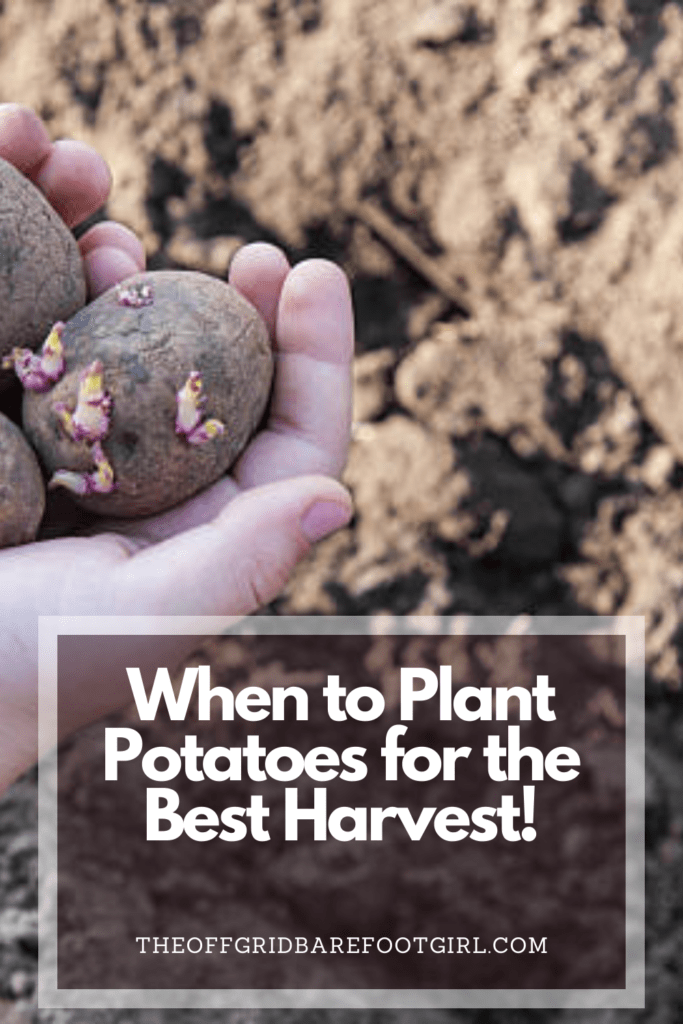
Frequently Asked Questions
1. Can I plant potatoes at any time of the year?
In most regions, you can plant potatoes in the spring once the soil has thawed and is workable. Potatoes prefer cool weather and need around 90-120 days to mature, so planting them too late in the season may result in a smaller harvest. However, if you live in a warmer climate or want to stagger your harvest, you can also plant potatoes in late summer or early fall for an autumn crop. Just make sure to choose early-maturing varieties and keep an eye on frost dates to ensure they have enough time to grow before the first freeze.
2. How do I know when potatoes are ready to harvest?
So, when it comes to harvesting potatoes, there are a few key signs to look out for. First off, keep an eye on the potato plant itself – when it starts to flower and the leaves begin to turn yellow and die back, that’s a good indication that the potatoes are ready to be dug up. You can also gently dig around one of your plants to check on the size of the tubers – if they’re a good size and have formed a nice thick skin, they’re likely ready to harvest. And lastly, don’t forget about timing! Depending on the variety of potatoes you’re growing, most will be ready for harvest somewhere between 70-120 days after planting. Just try not to wait too long or else your potatoes may start sprouting new growth in the ground!
3. Do I need to cure potatoes before storing them?
No, you don’t necessarily need to cure potatoes before storing them, but it can help extend their storage life. Curing potatoes involves allowing them to sit in a dark, well-ventilated area for a week or two after harvesting. This process allows the skin of the potato to thicken and heal over any cuts or bruises, which helps prevent rotting during storage. If you plan on using your potatoes relatively quickly, you can skip the curing process and simply store them in a cool, dark place away from sunlight. However, if you want your potatoes to last as long as possible without spoiling, it’s worth taking the time to properly cure them before storing them. Just make sure to brush off any excess soil before curing and storing your potatoes to prevent mold growth.
4. What are common pests and diseases that affect potato plants, and how can I manage them?
Potatoes are prone to a range of pests and diseases that can wreak havoc on your plants if left unchecked. Common pests include Colorado potato beetles, aphids, and potato tuber moths, which can all cause significant damage to both foliage and tubers. Diseases such as late blight, early blight, and blackleg can also pose a threat to your crop. To manage these issues, it’s important to practice good crop rotation and rotate your planting location each year to reduce the buildup of pests and pathogens in the soil. Implementing proper spacing between plants to improve air circulation will help prevent the spread of diseases as well.
Summary
I hope I have inspired you to grow some potatoes with these tips and products.
If you were encouraged by this post, I invite you to check out my FREE Printables Page for fun free printables, planners, and charts.
ENTER MY FREE Printables Page HERE
Here are some more of my gardening inspiration posts to check out!
Onions: How to Grow Onions for Storage
Peas: How to Grow Garden Peas for a Bumper Crop
Carrots: How to Grow Carrots for a Bountiful Harvest
Prep Your Garden for Spring Planting with These Expert Tips!
How to Grow a Prepper Garden to Survive and Thrive
The Best Garden Tools You Need for a Productive Season
Fastest Growing Vegetables for Your Survival Garden
How to Grow Marigolds As Pest Control In Your Vegetable Garden
Must-Have Tools for a Successful Balcony Vegetable Garden
How to Effectively Combat Powdery Mildew in Your Garden
The Best Tips for Organic Gardening
How to Release Ladybugs In Your Garden for Organic Pest Control
The Best Garden Snail Control Strategies
The Best Spring Vegetables to Grow in Your Garden
Seed Starter Mix: How To Make Your Organic Seed Starter Mix At Home
How to Grow a Productive Canning Garden
How to Plant and Grow a Salsa Garden
Easiest Heirloom Vegetable Seeds to Grow Now
How to Use the Hand Twist Claw Tiller: Tackling Tough Soil
More Fun Gardening Posts to Check Out!
Planning Your Garden: How to Plan a Vegetable Garden: Expert Green Thumb Tips!
Winterizing the Garden: How to Winterize Your Vegetable Garden: Step-by-Step Checklist
Mulching the Garden: How to Make Leaf Litter Mulch
Grow a Pumpkin Patch: How to Grow a Pumpkin Patch in Your Backyard
How to Grow a Fall Garden: 9 Best Fall Crops
Clever Ways to Incorporate Indoor Composting into Your Home
How to Start Composting for the Garden: A Step-by-Step Guide
The Ultimate Guide to Composting in Your Suburban Backyard
Why I Built A Survival Garden in My Backyard
16 Best Medicinal Herbs to Grow in Your Garden Now
Blessings,
The Off Grid Barefoot Girl

